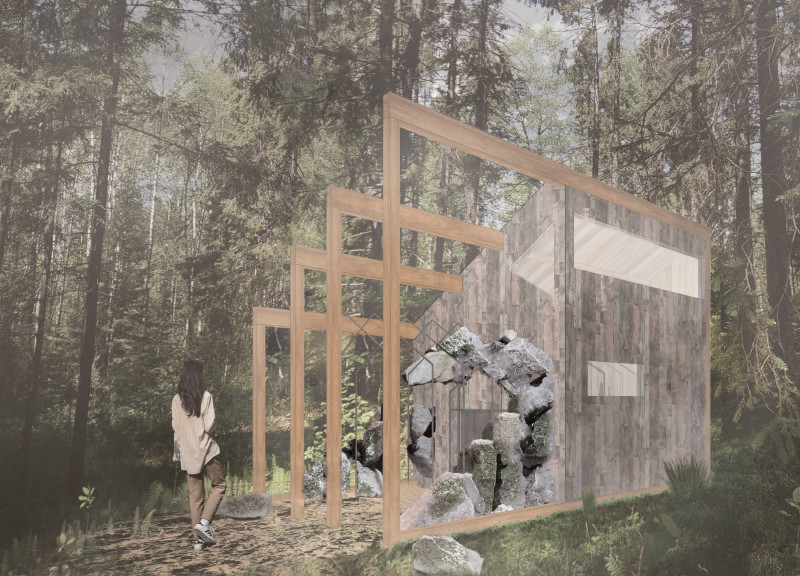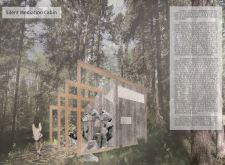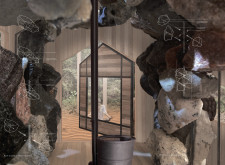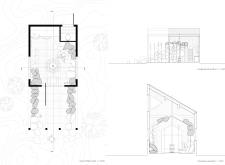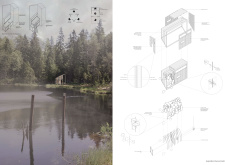5 key facts about this project
The silent meditation cabin at Ozolini Retreat is located in a tranquil environment designed for the practice of vipassana meditation. The structure aims to connect its inhabitants with nature while providing distinct spaces that facilitate reflection and mindfulness. The design thoughtfully considers how the environment influences meditation, creating a setting that supports quiet contemplation.
Spatial Organization
The layout of the cabin includes three primary areas that reflect the core marks of existence: impermanence, non-self, and unsatisfactoriness. The porch, which is open to the elements, connects users to the environment, embodying the idea of impermanence by allowing natural changes to penetrate the experience.
In the middle section, the atmosphere shifts to support silent meditation. This area, carefully enclosed yet bright, invites users to focus on their thoughts and find stillness. Its design encourages introspection, guiding individuals to explore the concept of non-self, away from everyday distractions.
Functional Elements
At the back of the cabin, essential living spaces are provided, including a bed, kitchenette, and dry toilet. This layout reflects unsatisfactoriness, highlighting the challenges present in daily life. By placing these practical amenities out of sight from the meditation area, the design encourages a balanced approach, where mindfulness can be seamlessly integrated into everyday tasks.
Material Selection
Local materials play a crucial role in the design, fostering a connection with the surrounding landscape. Reclaimed timber and stones sourced from the site not only add to the structure's strength but create a tactile and sensory experience. This choice promotes sustainability while allowing occupants to engage with the natural textures of their environment.
A defining feature of the design is the relationship between indoor and outdoor spaces. Large openings invite the landscape inside, allowing the sounds and sights of nature to enhance the meditation experience. This relationship helps create a holistic atmosphere where users can feel both part of the retreat and comfortably at home.


